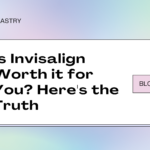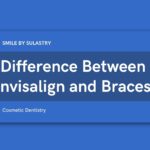Porcelain and Prepless Veneers – You deserve a smile that is naturally healthy. But sometimes, aesthetic problems can be one of the causes to get it. That’s why most people turn to veneers, which are tough dental covers that can help you if you suffer from tooth decay, cracked teeth, fissures, stains, or uneven bites. Although there are pros and cons when it comes to what material you choose for your veneer. But at this time, we will discuss two types of veneers, namely porcelain and prepless veneers, both of which are different in the procedure.
Also read Dental Requirements That Can’t Be Used With Veneers
Veneers in a short explanation
Veneers are strong yet thin shells, typically made of porcelain or a resin composite material that attaches to the front of your teeth. These tooth-colored coverings have several benefits:
- Veneers an alternative to removing teeth and don’t require anesthesia.
- Veneers are natural-looking and last for up to ten years if you maintain proper care.
So, what’s the difference between porcelain and prepless veneers? There are a few factors, but primarily the main difference lies in the placement procedure.
Porcelain veneers
Traditional porcelain veneers consist of several thin layers of ceramic material bonded together to form strong shells on your teeth. Your dentist will remove a small amount of your tooth enamel. It’s to make a room for the veneers when they are placed. The doctor will use a light sensitive resin over your teeth to bond the porcelain. Then finally place the shell against the tooth. The whole process takes place in three appointments, which involves consulting, straightening your teeth and making molds, and finally gluing the veneers to your teeth.
Prepless veneers
Once you know porcelain veneers, what are prepless veneers? Although they also consist of porcelain, preparated veneers only require your dentist to file a small amount of your teeth to prepare them to stick to the shell. This means less work in preparation for your dentist. You don’t have to remove the surface of your teeth. As such, the placement procedure can be faster and more comfortable than traditional veneers in general. Although the process is not very simple. In fact, with the right technology, your dentist can design and install veneers in one visit. If you are applying multiple veneers, it may take several visits to be up to 3 or even more.
There are several advantages to prepless veneers:
- The procedure is minimally invasive, pain free, and perhaps most importantly, you can preserve your tooth enamel.
- The enamel creates a strong adhesion to the resin, which creates a stronger overall veneer bond to ensure maximum durability.
- Prepless veneers are strong and durable. In fact, they can be very strong, but not stronger than your natural tooth enamel. Depending on the patient concerned and their dental routine, prepless veneers can last up to a decade or even longer.
- Very thin pieces of porcelain are carefully crafted to match the natural color of your teeth. Each veneer is bonded to each tooth with cement to make a straight, uniform cut. If something goes wrong, the prepless veneer can be easily renovated to get an accurate and attractive appearances.
- Prepless veneers don’t stain, but they don’t clean on their own. Regular preventive care is sufficient to keep these veneers clean. Such as brushing your teeth at least twice a day, flossing your teeth every day, and scheduling regular check-ups as usual to your dentist.
- Dental veneer treatment aims to remove as little natural tooth structure as possible to fit the veneer. Several factors can affect the preparation of your teeth for this procedure. This includes the position of your teeth and their condition. However, the qualifications for prepless veneers are not to much.
Conclusion
Taking care of your veneers is very important in the future. Although veneers can last for years, they are still susceptible to damage due to irreparable peeling of porcelain. You must replace the damaged veneer completely. Veneers are also prone to stains, just like your natural teeth. Stains appear on the surface of the veneer after regularly consuming drinks such as tea, coffee, wine.
Additionally, smokers tend to make yellow to brownish stains on their veneers. If you treat veneers in the same way as regular teeth, your veneers will be in excellent condition. In addition to avoiding biting hard objects or opening packaging with your teeth, be sure to brush your teeth twice a day with fluoridated toothpaste and clean between your teeth daily with dental floss, water floss, or other interdental cleaning tools. If the staining and discoloration gets worse, schedule a consultation with your dentist immediately.
You deserve a bright, confident smile. And with today’s advancement, you now have many options for dealing with imperfections in your teeth. You are free to choose traditional veneers, unprepared veneers, or other types of dental procedures. Trust that taking one step to improve your teeth will increase your self-confidence.
References :
- https://www.colgate.com/en-us/oral-health/veneers/porcelain-vs-prepless-veneers
- https://33smile.com/blog/10-things-need-know-prepless-veneers/
- https://www.destindentist.com/What-Are-Prepless-Veneers





